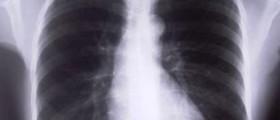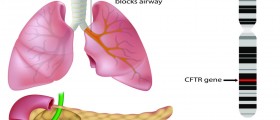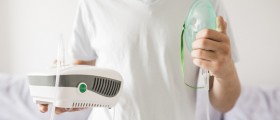
Pulmonary fibrosis and the main characteristics
This serious and progressive disease is primarilycharacterized by scarring and thickening of the lung tissue. The main symptomsthat the person will probably experience include shortness of breath, dry cough,tiredness, muscle ache, loss of weight that cannot be explained, and the fingersand toes are very likely to enlarge. Over time, as the condition progresses,the symptoms aggravate and this might lead to hypertension, respiratoryfailure, and congestive heart failure. As for the causes, they are numerous,but it is usually a result of some inflammation that lasted for a long time, orof abnormal accumulation of the collagen in the interstitial tissue.
How to diagnose pulmonary fibrosis?
Physical exam and symptoms are the starting point when itcomes to diagnosing the pulmonary fibrosis. What is also important here is a medicalhistory of the patient, as well as the information regarding any medicationsthat he or she might be taking at that moment, and, of course, whether or not thepatient smokes or undergoes radiation therapy, for example. Only after all thishas been established, the doctor will decide what tests need to be done further.Some of the tests that might be of help in detecting pulmonary fibrosis (orexcluding it) are X-rays of the chest, HRCT or high-resolution CT scan,bronchoscopy, lung biopsy, pulmonary function tests as well as exercisetesting. Echocardiogram, CAT scan, and bronchoalveolar lavage might also besuggested, but that depends on the doctor and whether or not they find itnecessary.
Chest X-ray results help in detecting scar tissue, althoughnot every person with this condition will have abnormal results.High-resolution computerized tomography provides the insightnot only in the presence of scar tissue, but also to what extent the lungs aredamaged. Thanks to this technique, the condition in question can be detected atthe early stage.Bronchoscopy requires inserting a bronchoscope through thenose or mouth all the way into the lungs. This way a sample of the lung tissueis taken from several places and it is sent to laboratory.Pulmonary function tests such as spirometry, for example, also help in determining the damage, as well as in determining the speed of breathing out.Exercise testing checks the moving of oxygen and carbondioxide in the bloodstream during some activity. EKG machine provides theinformation regarding the heart rate while the person walks or pedals on someexercise machine. Blood pressure is also being monitored, as well as the amountof the oxygen present in the blood.















Your thoughts on this
Loading...